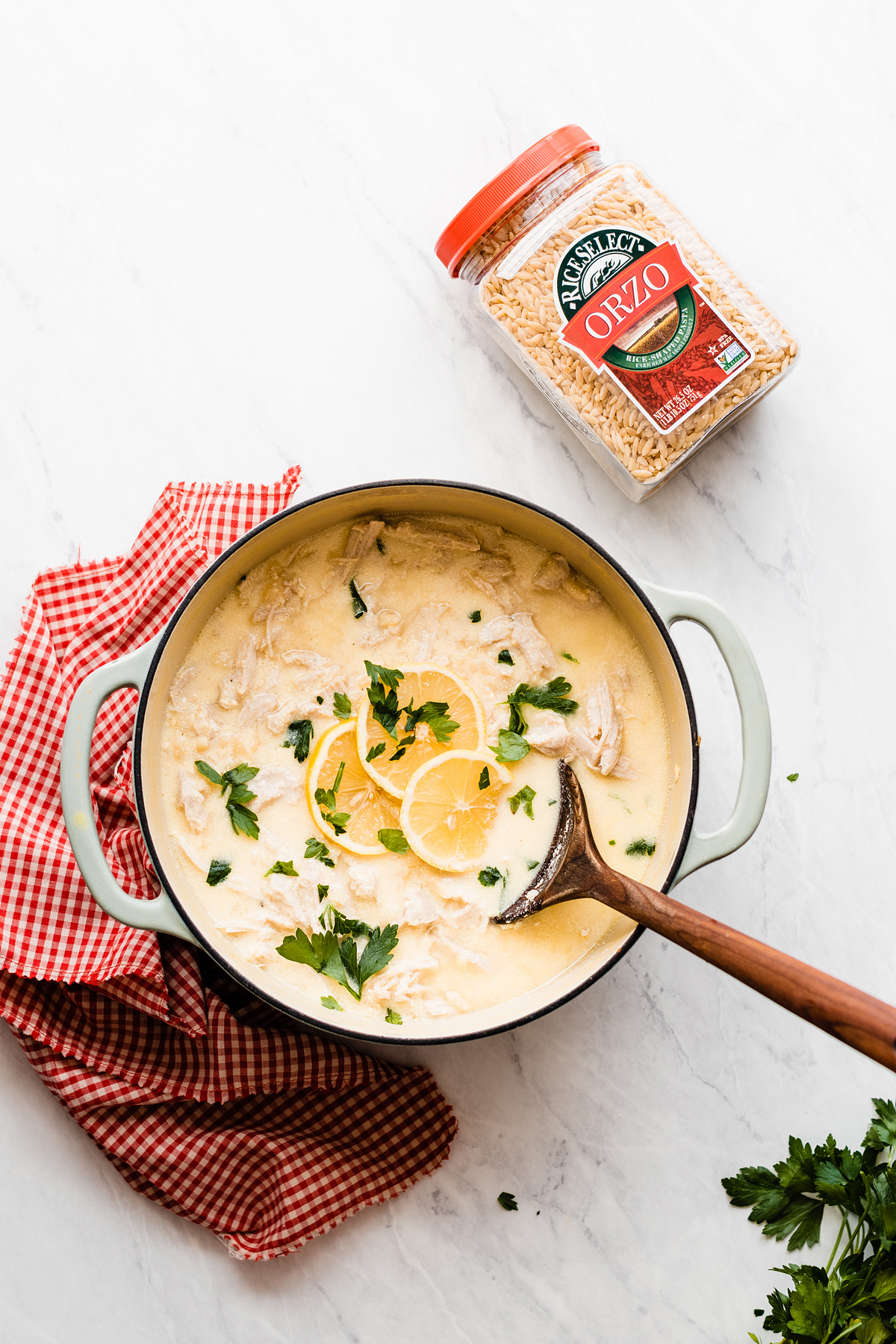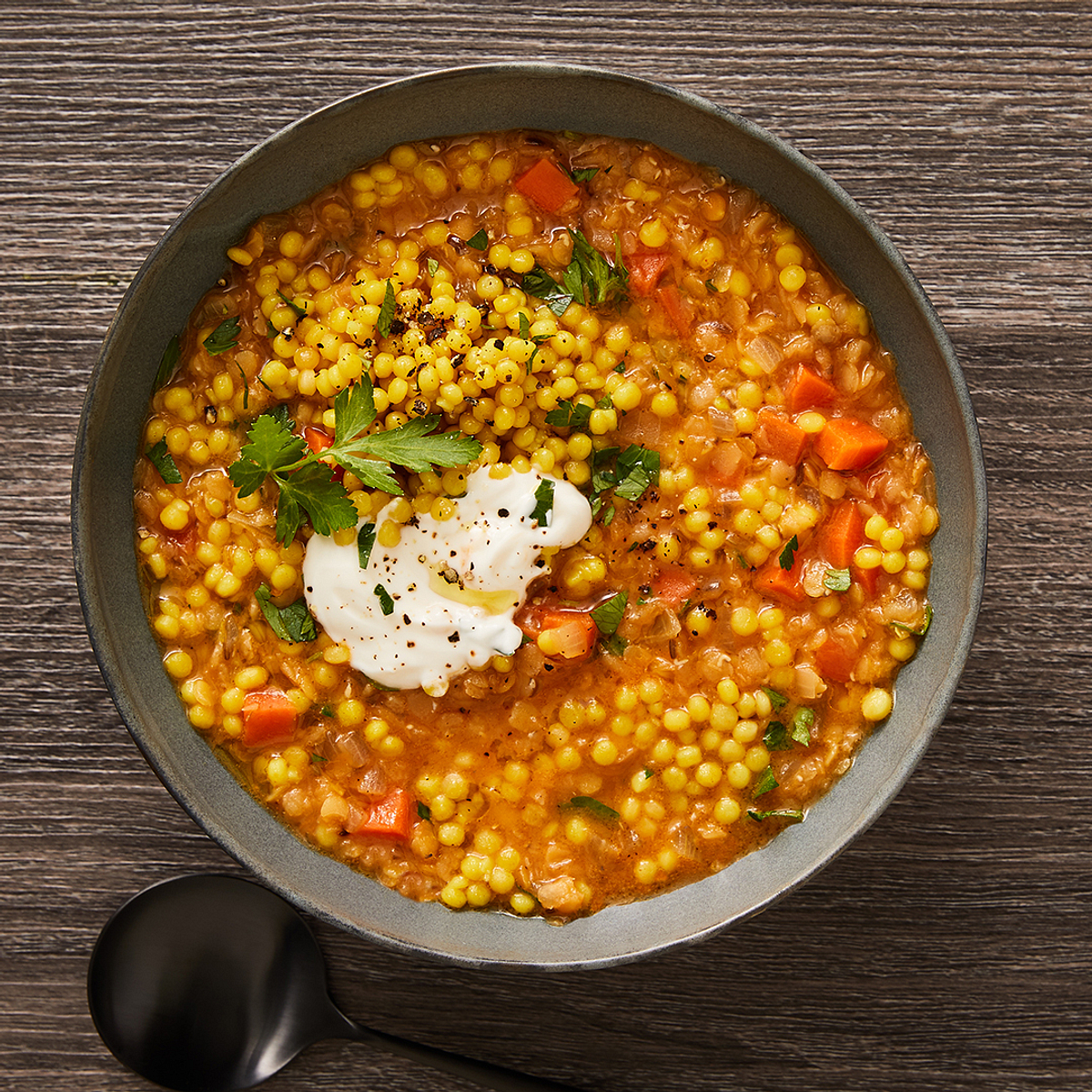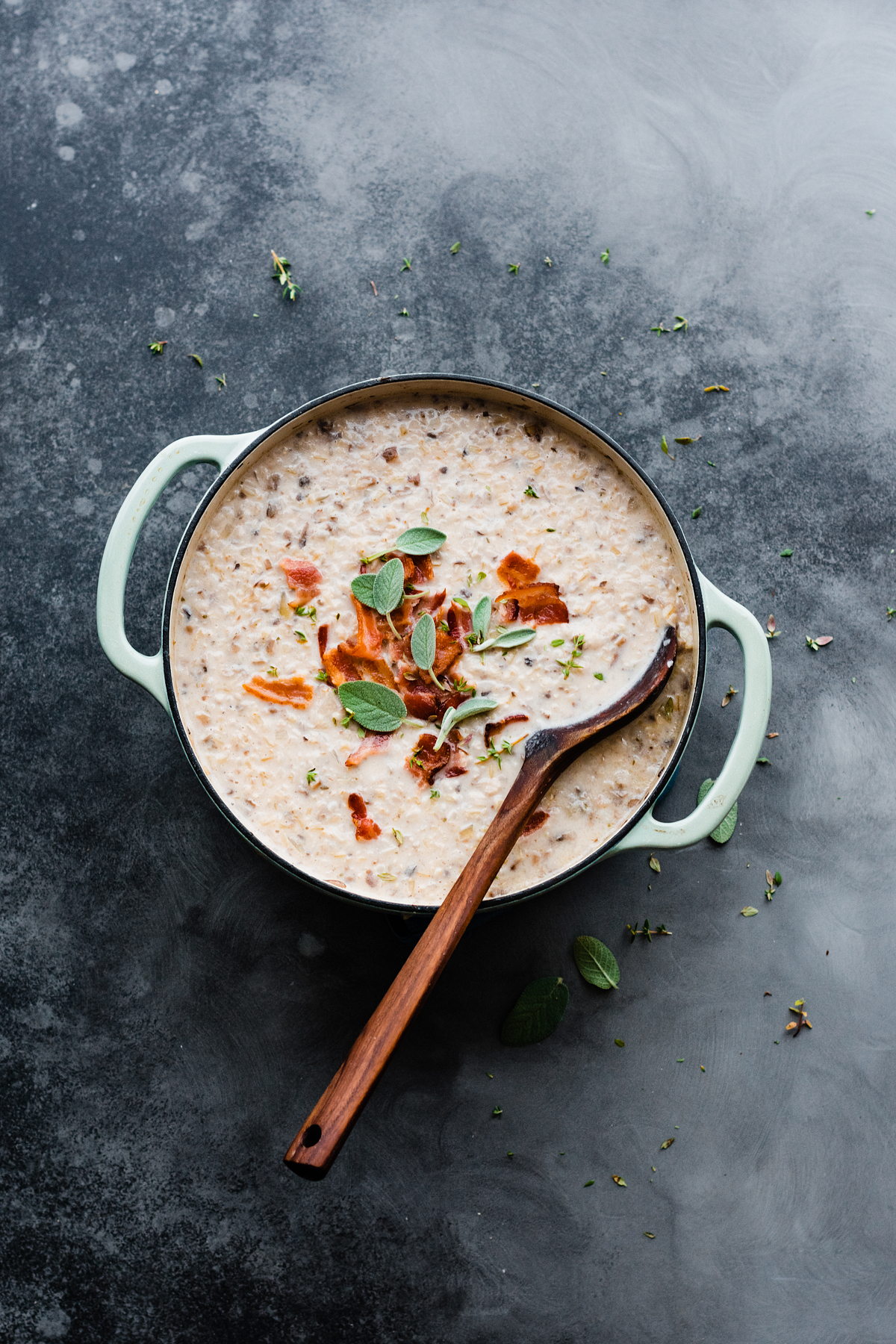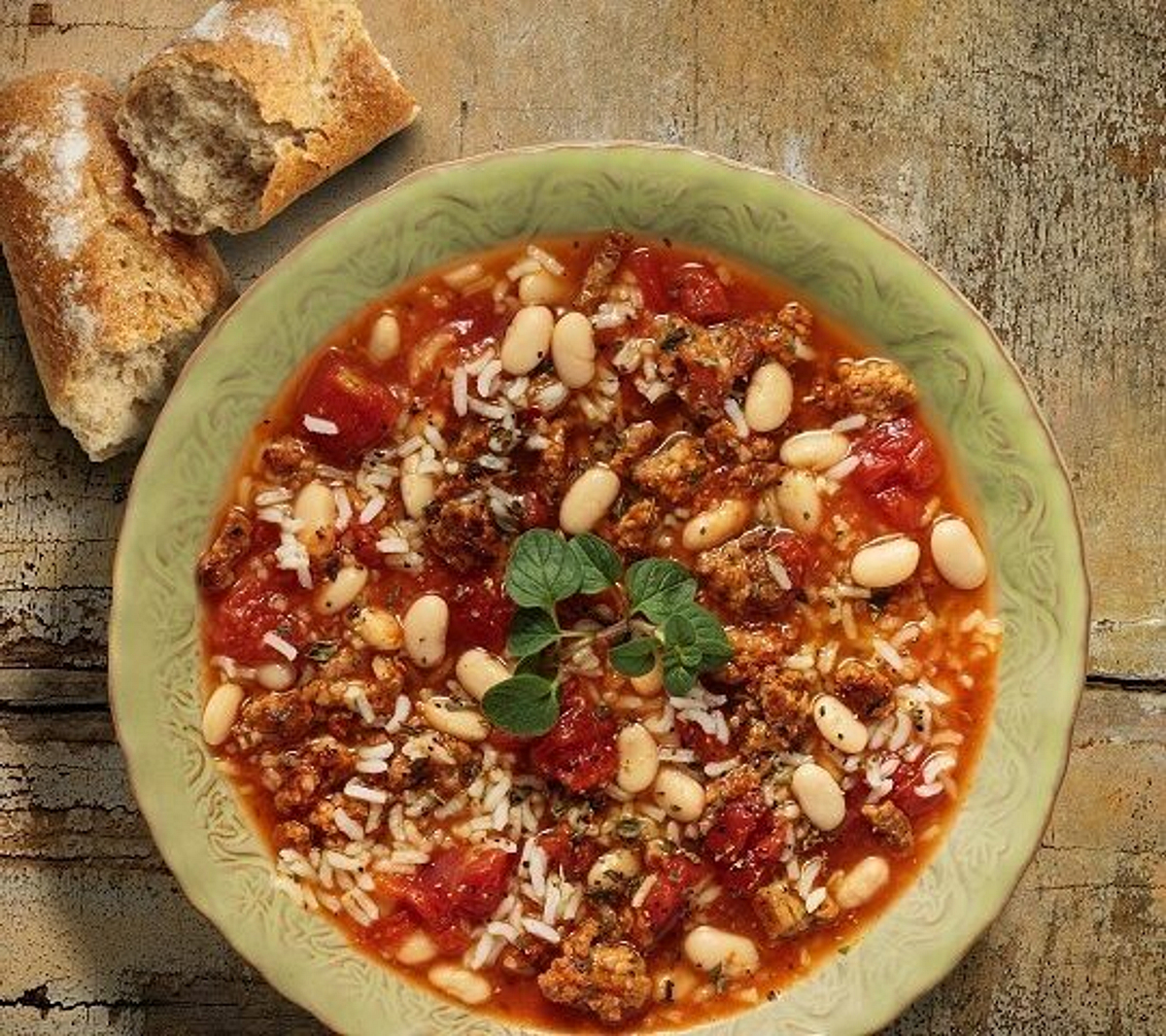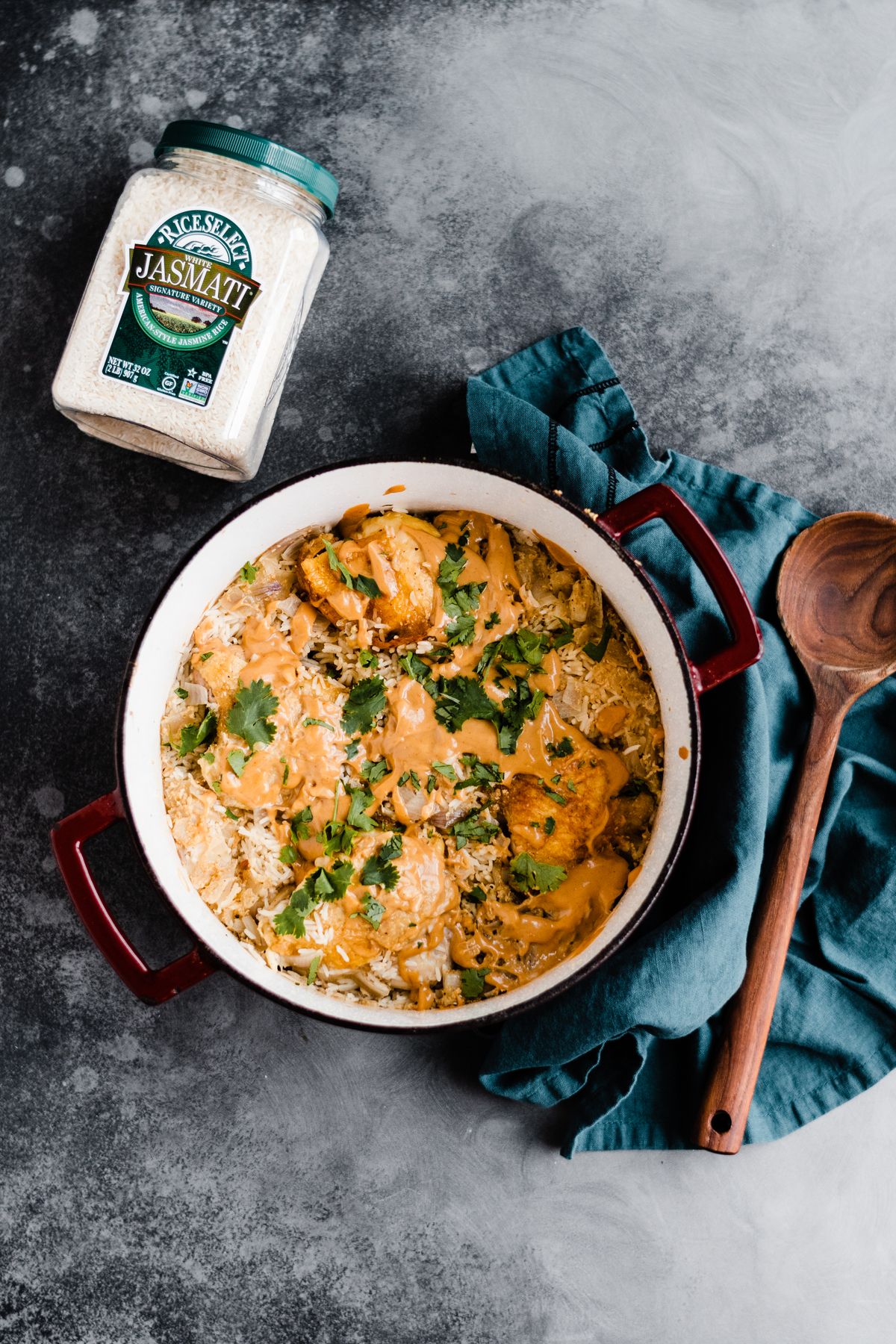Ideal comfort food for foodies, soups have the power to soothe you from the inside out. There is nothing quite like cozying up to a bowl full of flavor using natural ingredients and hearty grains or pasta! I believe there is a soup to meet any preference, mood, or occasion, so I’d like to take you through some of my very favorite homemade soup recipes using none other than RiceSelect®.
And, as some of the finest soups are layered with flavor, we’ll need to start with a base of incredible homemade taste with broth or stock. While I get a filling texture from the grains or pasta used, I find that the cooking liquid wields the most influence on the taste of the soup.
Making Stock or Broth
Often referred to as a true wonder of alchemy, stock and broth are made by tossing ingredients into one pot together and simmered to create something a bit magical. In fact, one cooking essential for home chefs is to learn how to make a good broth or stock, as it is the foundation and secret ingredient for many dishes from minestrone soup to Braised Duck and Arborio Rice.
You have the power to make it as flavorful, thick or thin as you choose and it can offer an incredible difference in your meals. Whether you’re aiming to make your own brothy soup or if you’re like me and you prefer the freshest possible ingredient options, I suggest making your own broth or stock.
Difference Between Stock and Broth
While many believe these two terms to be interchangeable, they have subtle nuances in cooking ingredients and time that set them apart. A stock starts with water simmered with animal bones (which may or may not contain any meat), an aromatic mirepoix of onions, carrots and celery and possibly herbs. It’s also cooked for anywhere from two to six hours over the stove.
On the other hand, a broth is technically any liquid that meat has been cooked in (most often water) and contains meat, with or without bones, a mirepoix along with herbs or other seasonings. It usually simmers in under two hours.
Note: If you’re wondering where bone broth fits into this equation, it is prepared in the same way as stock but may simmer for much longer from 6-24 hours, depending on the bones used to release all of the gelatin, collagen and extra nutrients into the water.
Broth or Stock Recipe Tips
So, when it comes to which one you should use in your meals, stock is a bit thicker and broth is thinner, with a bit more flavor from the seasonings. Depending on your recipe needs, stock may work wonderfully as an ingredient to build up the flavor, where broth can be served as the base for brothy soups or for added flavor in your favorite dishes. You may have your own recipe, but I’ll share a few tips from my kitchen for the next time you’re making a flavorful liquid base.
Making your own can be simple and is ideal after cooking chicken on the bone or another animal such as beef, pork, lamb or turkey. Here are a few home chef tips to keep in mind:
Use a high proportion of liquid and whatever fits into your pot is good enough! You may even want to limit the vegetables and meat bones.
Stick to small amounts of herbs and spices. The long simmering time, particularly for stock, will extract lots of flavor so if you add a lot of seasoning it may overpower the taste.
You may want to strain your broth or stock twice just in case you missed any small bits of bone or vegetable.
Once you’ve used the animal bones for cooking, discard as they have already released their nutrients and flavor! The vegetables and herbs can also be discarded.
Once you’ve prepared your broth, it’s time to dig into some incredible soup recipes!
Luscious Smooth Soups
Creamy and wonderful, I like to obtain that luscious and velvety texture in different ways.
Rouxs and More
Using a roux, give your soup a base of thickness like in this Creamy Chicken and Rice Soup with brown rice, broth, broccoli and herbs.
Reminiscent of Greek Avgolemono soup, this Lemon Chicken Orzo Soup is made with this RiceSelect® Orzo recipe and gets its thick texture from tempering egg yolks in broth.
Blended
By using an immersion blender, standard blender or food processor you can purée half of your soup recipe to add in with other ingredients and add a wonderfully smooth texture. My favorite is blending cooked rice and broth for a thicker consistency like in this Creamy Mushroom Garlic and Rice Soup. By blending sautéed mushrooms and onions with 1 1/2 cups rice, cheese and 1 cup broth you can add a great taste.
Finally, this Lemon Velvet Chicken and Rice Soup uses a blended combination of aromatic Texmati® White Rice with heavy cream and roasted garlic chicken broth.
Chunky Soups
Soups that are loaded with all kinds of ingredients including rice, beans, vegetables and other legumes or pasta, when mixed, are more delicious and greater than the sum of their parts.
This Tuscany Texmati® Rice & Bean Soup is made with a blend of Texmati® Brown Rice, Italian sausage, Great Northern beans, diced tomatoes and loads of herbs.
For a meat free and hearty soup, this Lentil Turmeric Pearl Couscous Soup is made with our exclusive RiceSelect® Pearl Couscous with Turmeric, red lentils, herbs, broth and tomato paste for a thicker texture. If desired, try this recipe with our traditional Pearl Couscous recipe.
International Inspiration
Get inspired in the kitchen with flavors from around the world! I’ve chosen two of my warm soup-like favorites. I encourage you to try something new this year like a Vietnamese Rice Porridge with Chicken Chao Ga. The wonderful thing about this soup is that it’s made with RiceSelect® Jasmati® Rice which is an intensively fragrant Jasmine variety that absorbs the umami flavors incredibly.
Try our traditional Jasmati® Rice in this Thai inspired Peanut Sauce Chicken and Rice Recipe with fresh ginger and garlic.
How to Freeze Soups For Meal Prep
First, if you’re planning on freezing your soup, it’s essential that it cools down before moving it anywhere. This can be achieved by giving your pot an ice bath or simply waiting for it to cool off.
Once it is cool, divide it up into flexible ice cube trays, quart-size freezer bags or other jars and containers. While grains and pasta in soup can definitely be frozen safely, for best meal prep results, I suggest you cook the grains and rice separately and add them in once your soup is thawed.
If you plan to eat soup throughout the week, a cooked soup covered in the fridge will last for 3-5 days.
Take your passion in the kitchen and transform your mealtime into something unforgettable with the help of RiceSelect® and your favorite ingredients! Try making a recipe like this Spanish shrimp and rice dish or one of our easy pearl couscous recipes. Share your creations with me by tagging @RiceSelect in your posts on social media.

